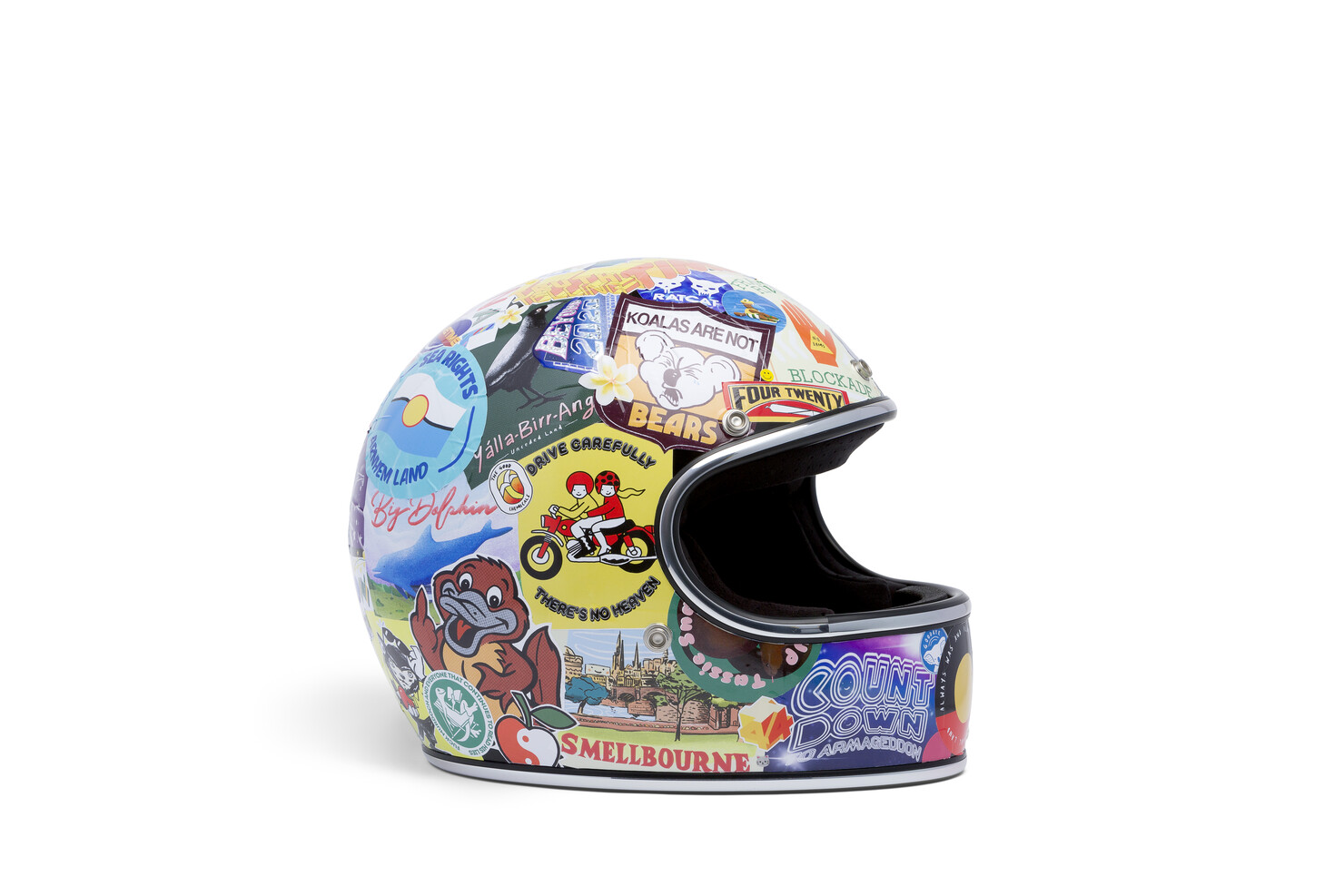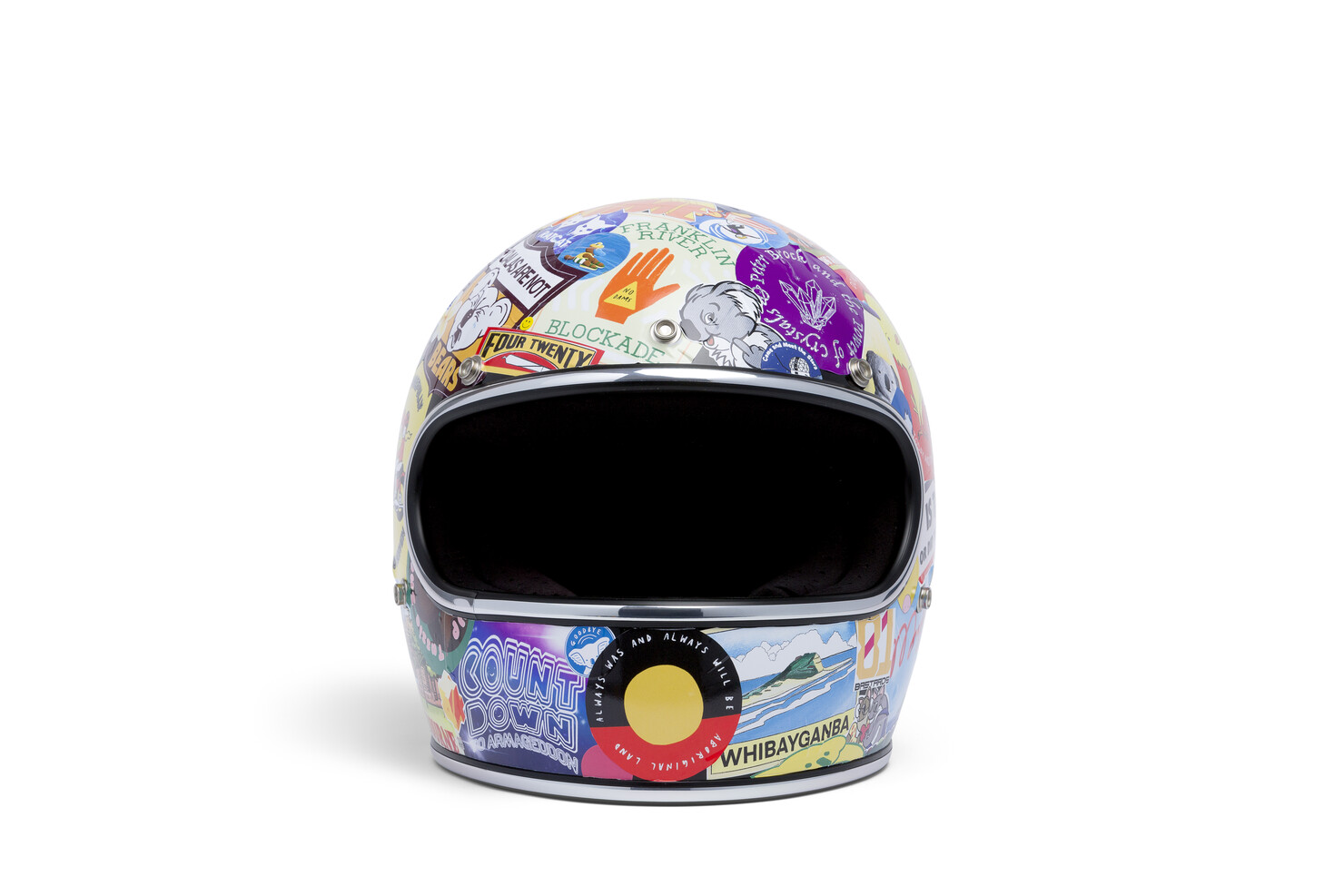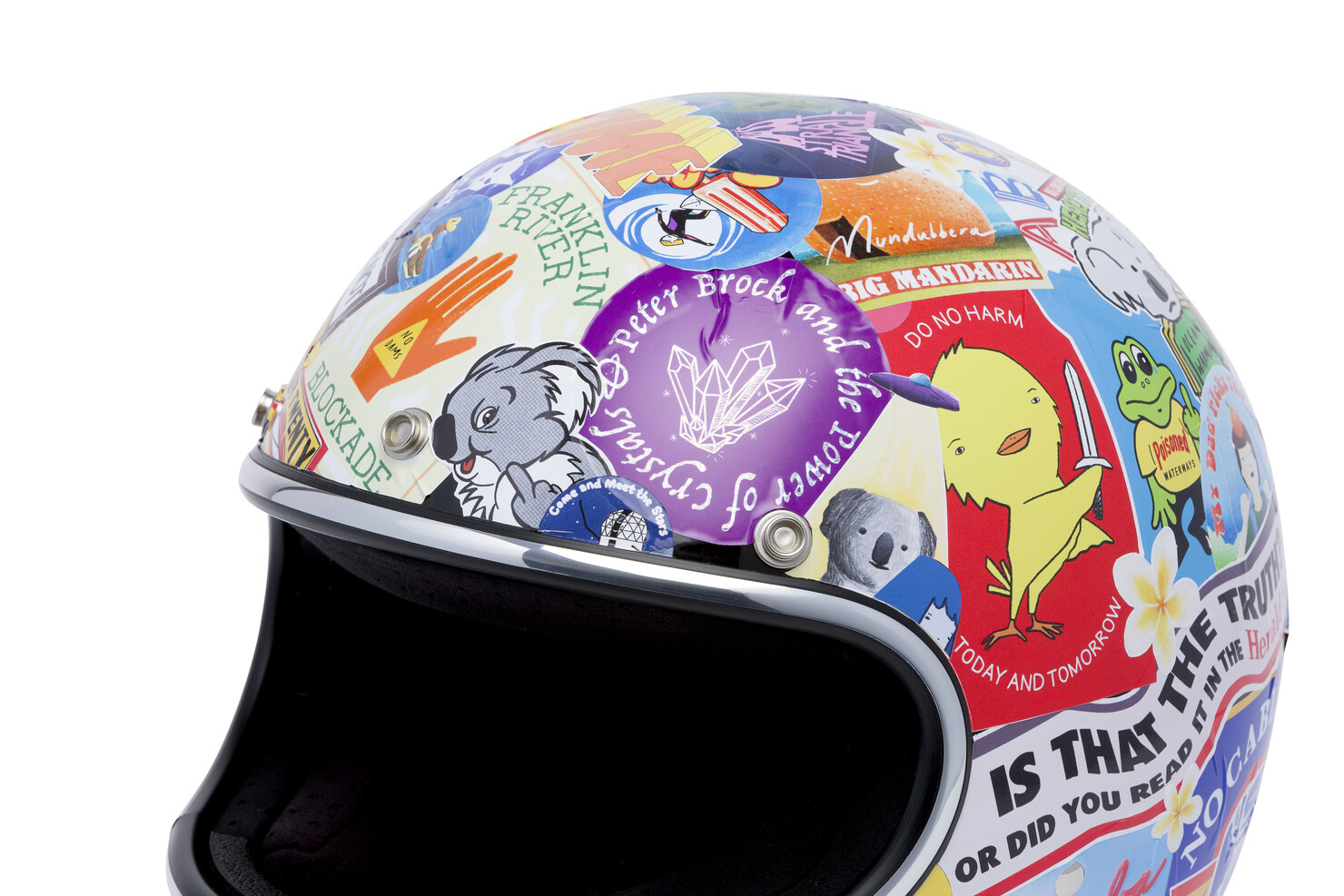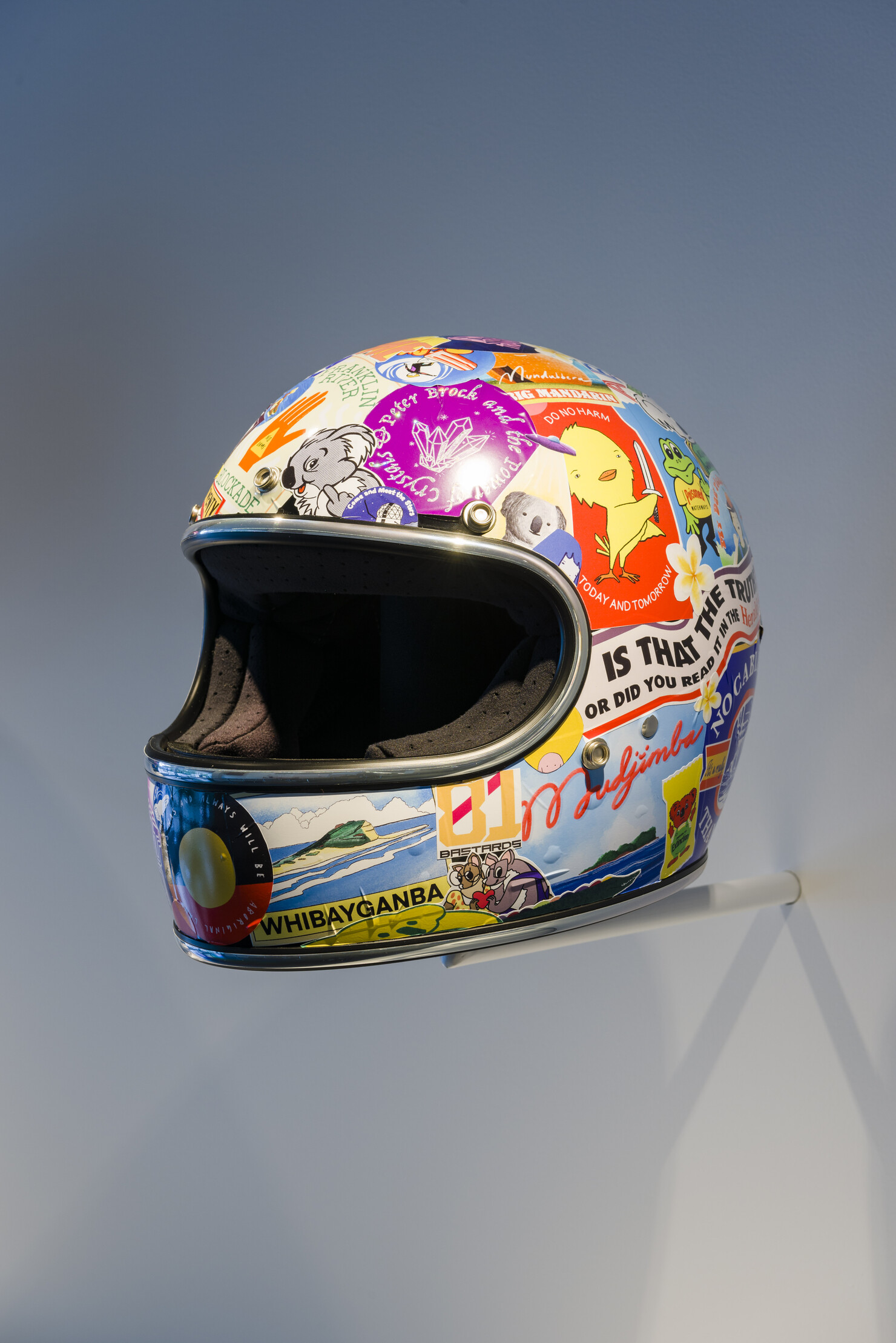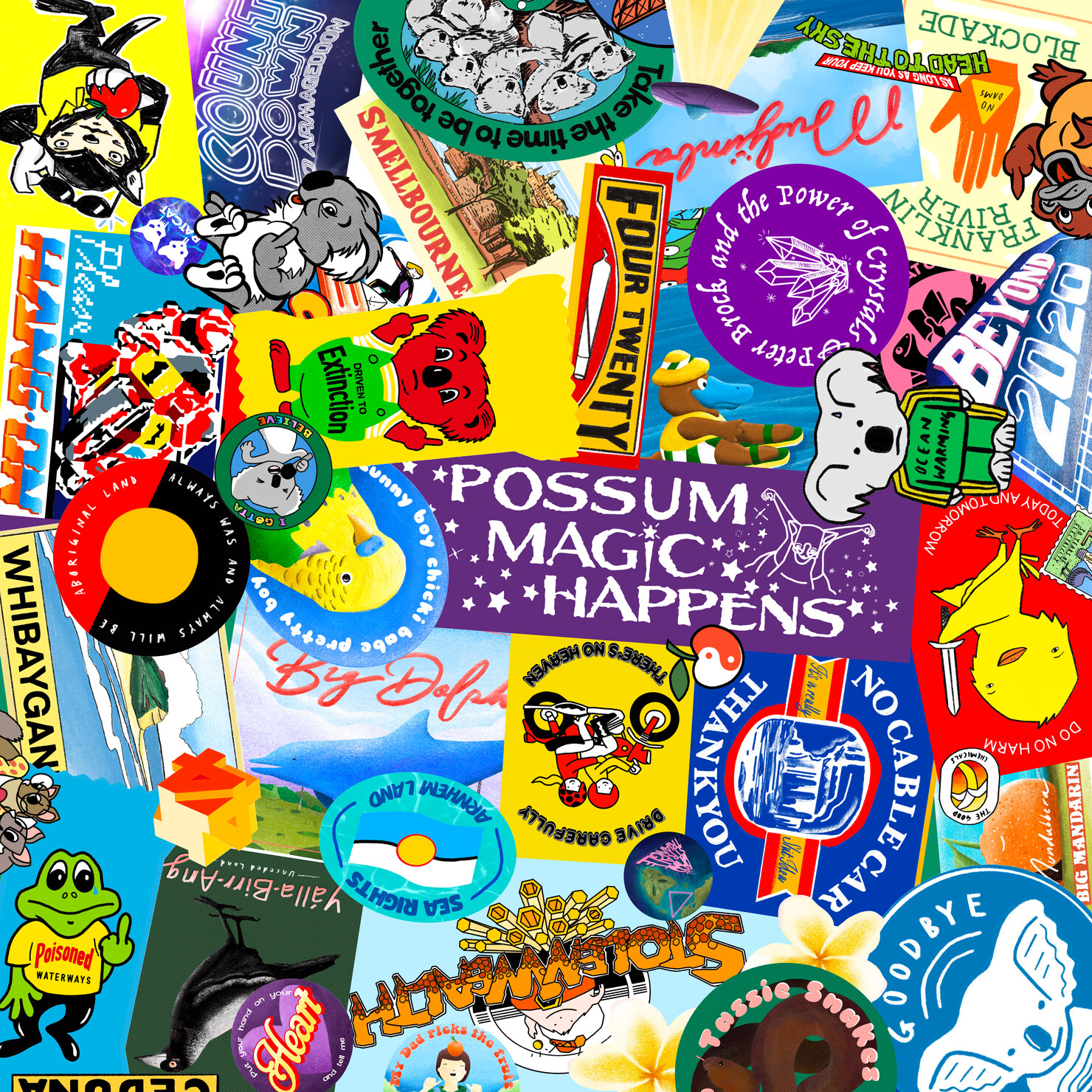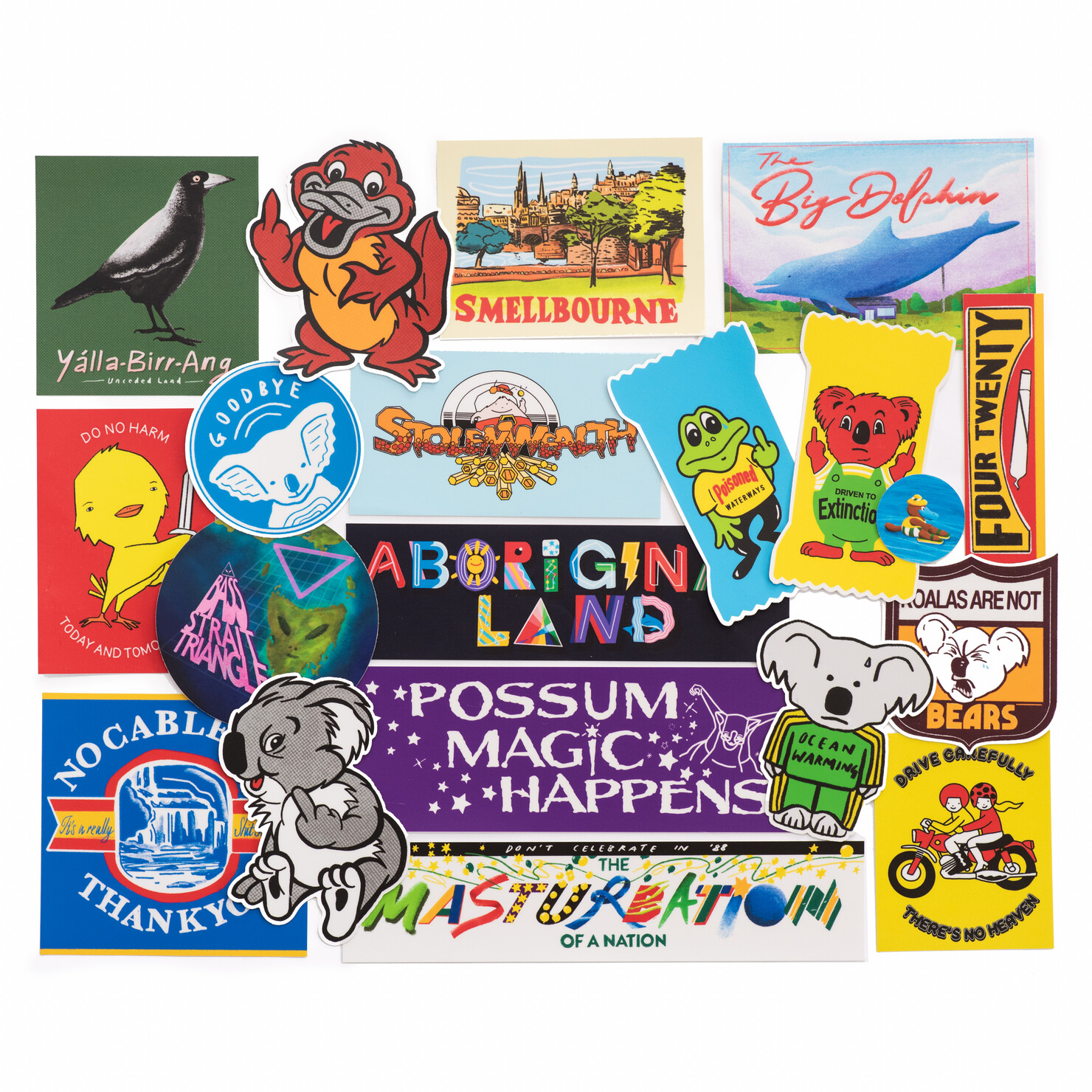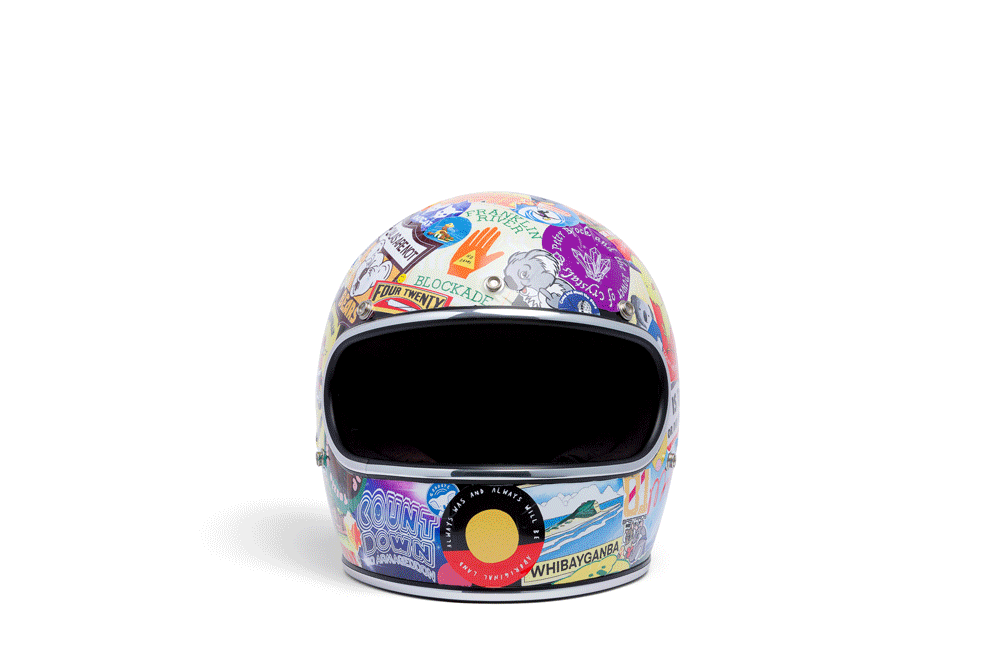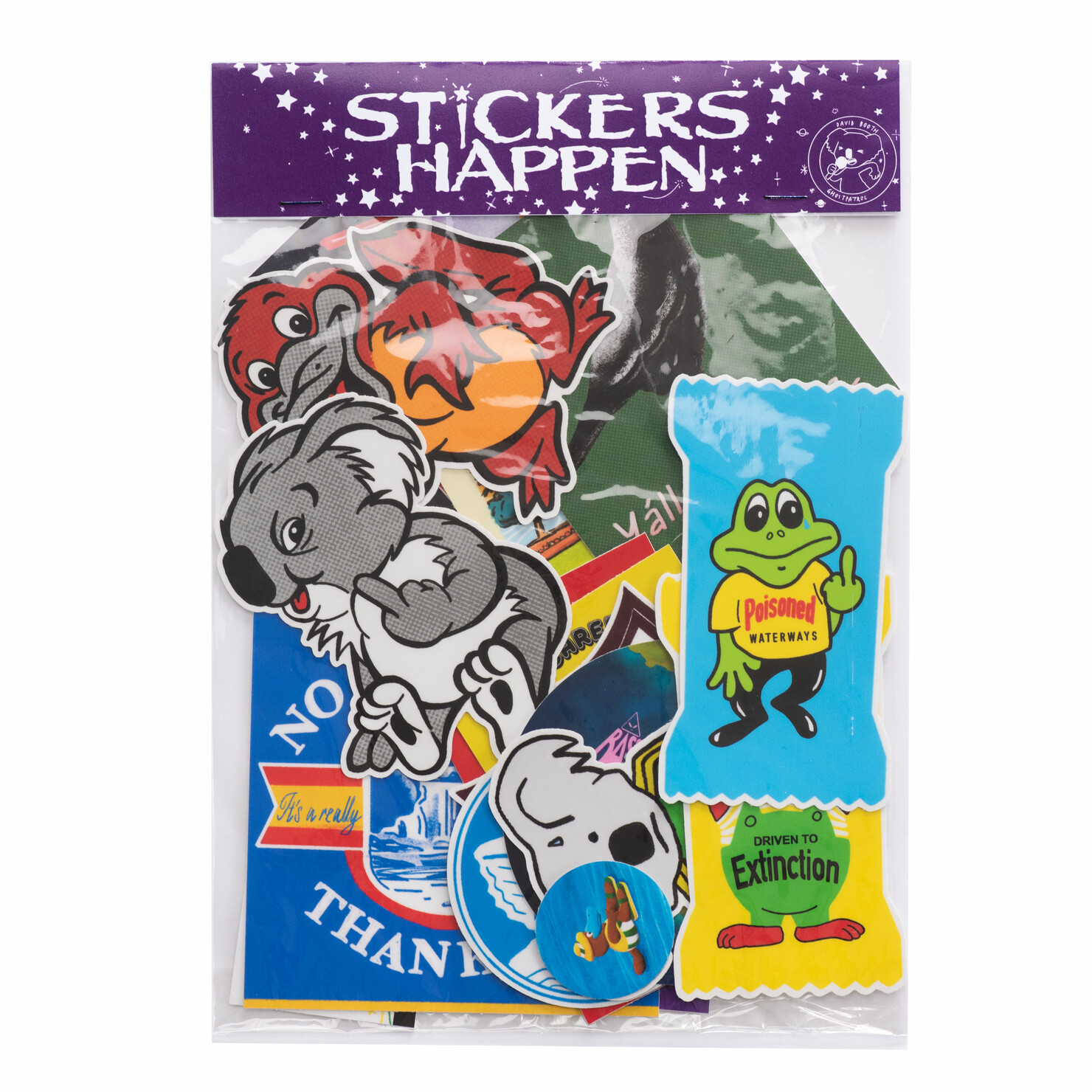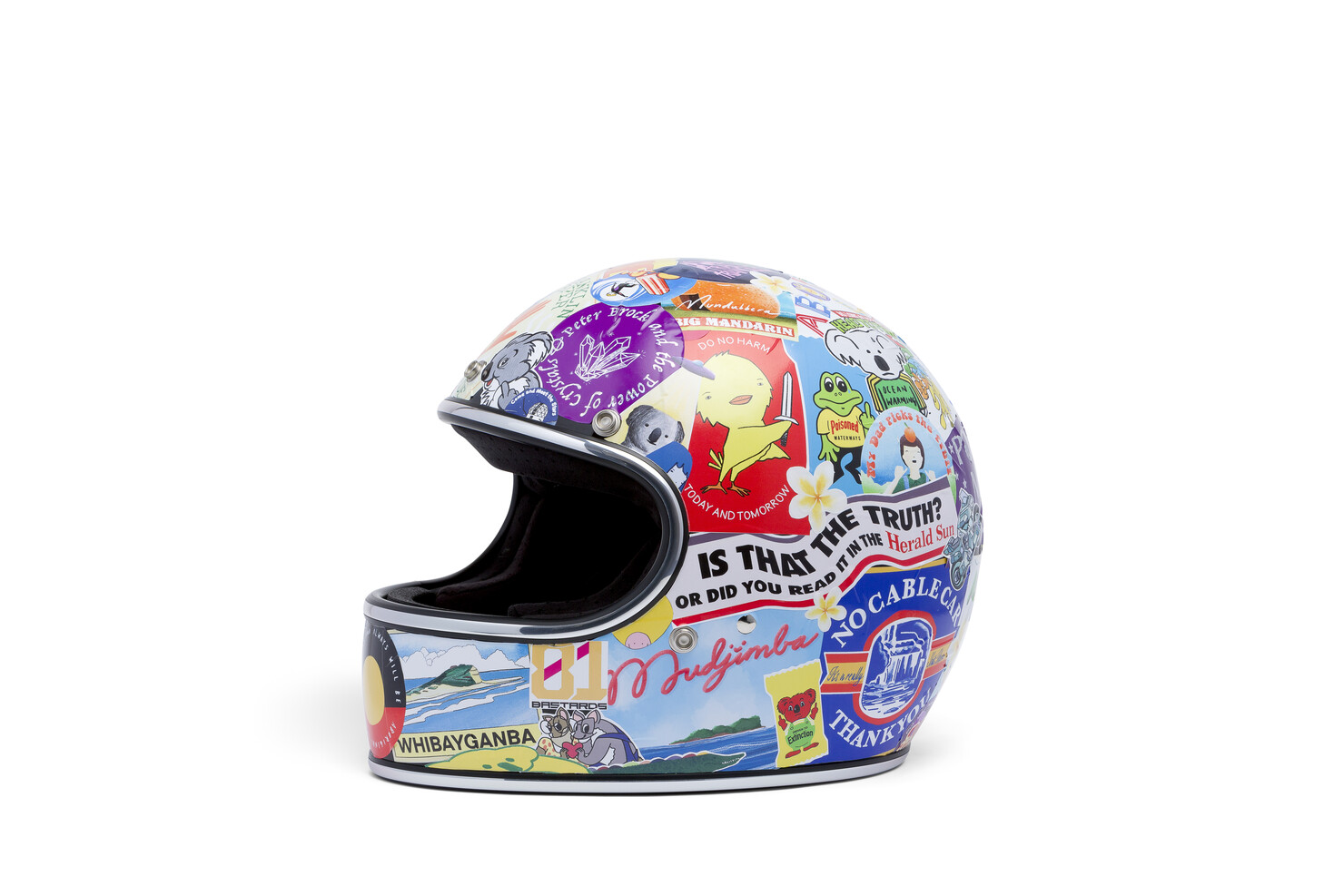Full Face (Stickers happen), 2020
QA GOMA
Faced with a blank motorcycle helmet, I took to Google as a means to research the symbology and graphic design associated with motorcycle culture in Australia. I’m sure it is no surprise that I was peppered with odd, racist imagery and violent ‘bikie’ news. However, amongst it all were a few images that led me back to my childhood. I’ve always loved seeing collections of collaged stickers on the rear windows of roaming, adventure seeking cars and vans. Collections that build over years, spruiking slogans, trophies of places visited and strongly held beliefs. They are as much personal and unique as they are public, and generally upbeat or humorous too, but not always.
I grew up in the 80s and have strange memories of the graphics of the time, particularly those centred around the bicentenary of Australia in 1988. As a child I was always drawing, copying and reconfiguring what I was exposed to. The distinctive graphics and character use of that era, grossly nationalistic but bright and fun, made such a lasting impression. It all seemed a bit unreal and off in a distant place. Expo 88, The Big Pineapple and the idea of the ‘Australia’ I saw on TV was a long way away from my childhood in Tasmania.
As I’ve grown older I’ve looked back at this period of history with mixed emotions. I’ve learned that the celebrations around the bicentenary were times of great protest for First Australians. I recently read Gumbainggir activist, academic and author Dr. Gary Foley’s writings from the time, published in Goori Reader No.1: History, Memory and the Role of Cultural Organisations in Entrenching Colonisation in Australia and Beyond. His reflections inspired me to subvert a number of popular designs of the era, using protest slogans as the impetus for questioning how we deliver and receive ‘truth’. Changing the iconic phrase ‘Celebration of a nation’ to ‘Masturbation of the nation’ came directly from Dr. Foley’s writing.
As much as some of this iconic Australian imagery is familiar and beloved to many Australians, I think it is also paradoxical. The idea of what it is to be ‘Australian’ is challenging to me. While our collective nationalism and imagery celebrates our land, our flora and our fauna, our actions don’t reflect respect for the custodianship of the land, nor the unique species of plants and animals that are being driven to extinction. So once again I’m playing in the nostalgic space of kitschy Australian 80s graphic design, only this time as an adult, and subverting it, not blindly celebrating it.
The collection of stickers on this helmet should conjure thoughts of an adventurous traveller amassing tokens across both time and place, but in it we can see an alternate view of recent history.
photos: Mark Lobo
